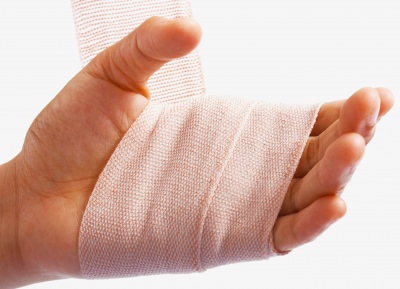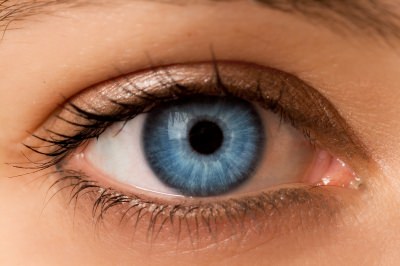
|
We don't wish on anyone these kinds of injuries as we are about to discuss. However, it is no small secret that most accidents occur in the home, including cuts, suffocation, bruises and concussions. It is crucial to know what to do when these things happen, as you never know how long of a time you can allow yourself to wait for the ambulance to arrive. Actions taken immediately after an accident have many a time saved lives or at least decreased the damage of the injury. The things you do right after the accident are extremely important. And so, keep these advice close by, as it is so much better to have and not need, than to need them and not have...
Nose Bleeds
Nose bleeds occur when the gentle blood vessels inside the nose break. This could happen easily due to weather conditions, a strong blow or a chronic leaky nose.
What to IMMEDIATELY do: Sit on a chair and lean your body forward. Pinch your nose closed right below its bridge, where the bone meets cartilage. Maintain the pressure for 5-15 minutes. You can also use an ice pack to keep pressure.
Some suggest laying cold metal on the back of the neck or along the spine to narrow the blood vessels and stop the bleeding. For this method, any metal item will do, such as a tablespoon, a coin or a key. And so it is advisable to keep a metal item in the freezer for just this case.
What NOT to do: Do not tilt your head back, as you may swallow the blood, and it may enter your lungs.
When to seek medical aid: Contact a doctor if you aren't able to stop the bleeding after 20 minutes, or if there is no good reason for it, or if it is accompanied by headaches, dizziness, ringing in the ears or visual impairments.
Sprain
Sprains may occur when the ligaments around the joints are over stretched. Bruises and swelling often accompany sprains.
What to IMMEDIATELY do: On the first day, put ice on the injured area and change it every 20 minutes. Bandage the hurt area with an elastic bandage to keep the area from moving and don't move it for 24 hours. Afterwards heat the area to get the blood flowing again.
What NOT to do: Do not try to 'work through the pain', it will only get worse and you may end up doing further damage.
When to see medical aid: If the problem doesn't get better within a few days, go to a doctor.
Burns
First-degree burns can cause redness of the skin. 2nd degree burns may cause
 blisters, and 3rd-degree burns may cause blackened skin and damaged deep tissues. blisters, and 3rd-degree burns may cause blackened skin and damaged deep tissues.
What to IMMEDIATELY do: When it is a 1st or 2nd degree burn, put it under flowing cool water or put wet towels on the area.
Common house-hold treatments to reduce pain: A soaked teabag will bring about immediate relief, owing to the healing qualities of Tannins, which are known to shrink tissues.
Soak a bag of tea in cold water, and then put on the skin. These are also a great solution for sunburns.
Uncooked potato: Take off the shell of an uncooked potato, cut it into slices and put on the burnt area, so the liquid coming out of the potato will calm down the burn.
Vinegar: In case of a light burn, white vinegar or apple vinegar will do the work. Pour a little vinegar on a cloth towel and put on the burn for a while, the vinegar will disinfect the area and will stop the wound from becoming infected.
What NOT to do: Don't put ice on big burns. Ice may damage the skin or make the injury worse. You cannot use antibiotics or butter either.
When to seek medical aid: If these are 3rd-degree burns or electrical or chemical burns.
Open Wounds

Open wounds in the skin need to be quickly treated to prevent infection.
What to IMMEDIATELY do: Place a strip of gauze on the wound and apply direct pressure to stop the bleeding. If these are minor cuts and scrapes, wash with water and soap and smear a thin layer on vaseline or antibiotic cream, and cover with a band-aid or bandage.
What NOT to do: Do not wash nor put a regular cream on a large, deep or very bloody injury. Instead go seek medic aid.
When to seek medical aid: If the wound is deep and becomes infected, accompanied by heat, redness, swelling or red stripes around, or if it has a foreign object in it (such as a nail) - go seek medical aid immediately.
A blow to the head
The skull provides our brain with very good protection, and so only rarely does it get hurt, but if it is a strong blow, the neck, back and soft tissues can get seriously damaged.
What to IMMEDIATELY do: If the person is unconscious, call an ambulance. If the area looks like it is bleeding, treat it like a cut but make sure to follow up with a doctor who will check for internal injuries. You can put a bag of ice on the area to decrease the swelling.
What NOT to do: Don't leave the injured person alone. Especially when they are asleep. Wake them every 3-4 hours and ask simple questions ('What time is it?' 'What day/date?' 'What is your name?') to make sure there is no brain injury or concussion.
When to seek medical aid: If the person harmed is convulsing, feeling dizzy or nauseous, vomits or displays obvious changes to behavior.
Suffocation
Suffocation is a rare occurrence and when it happens it can be deadly. When a person is chocking they cannot cough strongly enough to breath or talk, and his face will begin to get blue or red.
What to IMMEDIATELY do: Call an ambulance. If the person is more than a year old lean him forward and with your palm hit his back firmly, between the shoulder blades, five times. If that doesn't work, stand behind him and put one fist over the navel area, leave one thumb up and put another hand on top. Apply pressure inwards and up in the direction of the ribs, 6-10 times, using the Heimlich maneuver.
If you are alone, press your stomach on something solid like a kitchen counter or use your hands to press above the navel.
What NOT to do: Do not drink water if there is a strong cough.
When to see Medical Aid: In cases of a serious suffocation.
Poisoning
Possible risks at home include cleaning materials, Carbon dioxide and pesticides. Even stings can be poisonous for some people.
What to IMMEDIATELY do: If a person is unconscious or is having trouble breathing, you must take them immediately to seek medical aid. Be prepared to give out the next details quickly: What is the substance involved, how much was taken, when, what is the weight and age of the person?
What NOT to do: Don't wait for the symptoms to start to call for help. Don't try to vomit and don't drink anything, unless a medical professional has told you so.
When to seek medical aid: Always and right away.
An object enters the eye
 Anything that enters the eye, whether it is a grain of sand or a chemical mixture, can cause pain and may harm the cornea. Anything that enters the eye, whether it is a grain of sand or a chemical mixture, can cause pain and may harm the cornea.
What to IMMEDIATELY do: Try to blink the foreign object away. If it doesn't come out, wash the eye by holding the lid open under a faucet.
What NOT to do: Do NOT rub your eyes. Even a small amount of dirt may scratch your cornea and cause infection and irreparable damage. Never try to dislodge a large object yourselves or an object buried deep in the eye. Leave that for professionals.
When to seek medical aid: If a chemical material like bleacher enters, or it is a large object or one that is lodged deep in the eye - go to the emergency room immediately. If it is a small object but it causes swelling or disrupts your vision - call a doctor.
|